Michelangelo Drawings
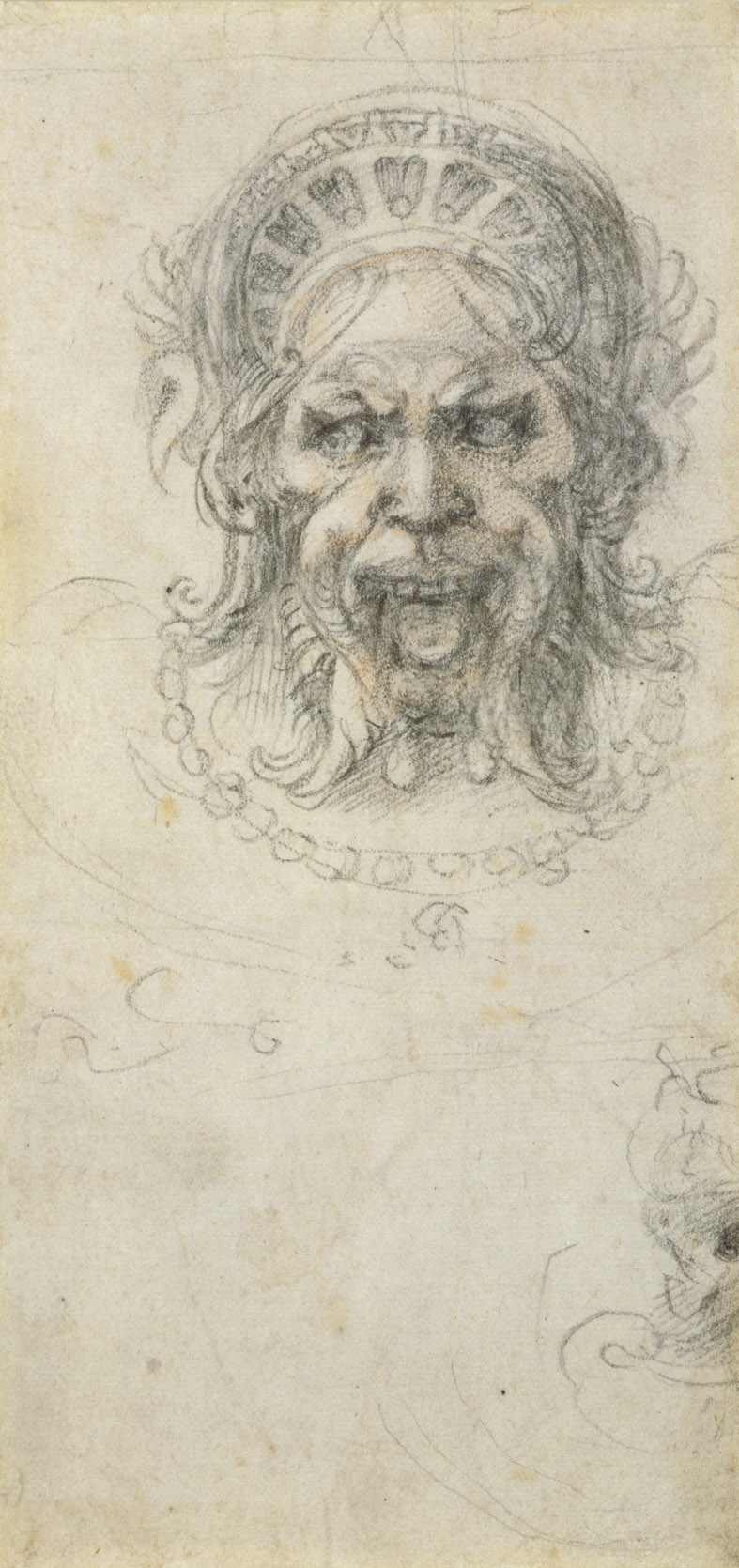
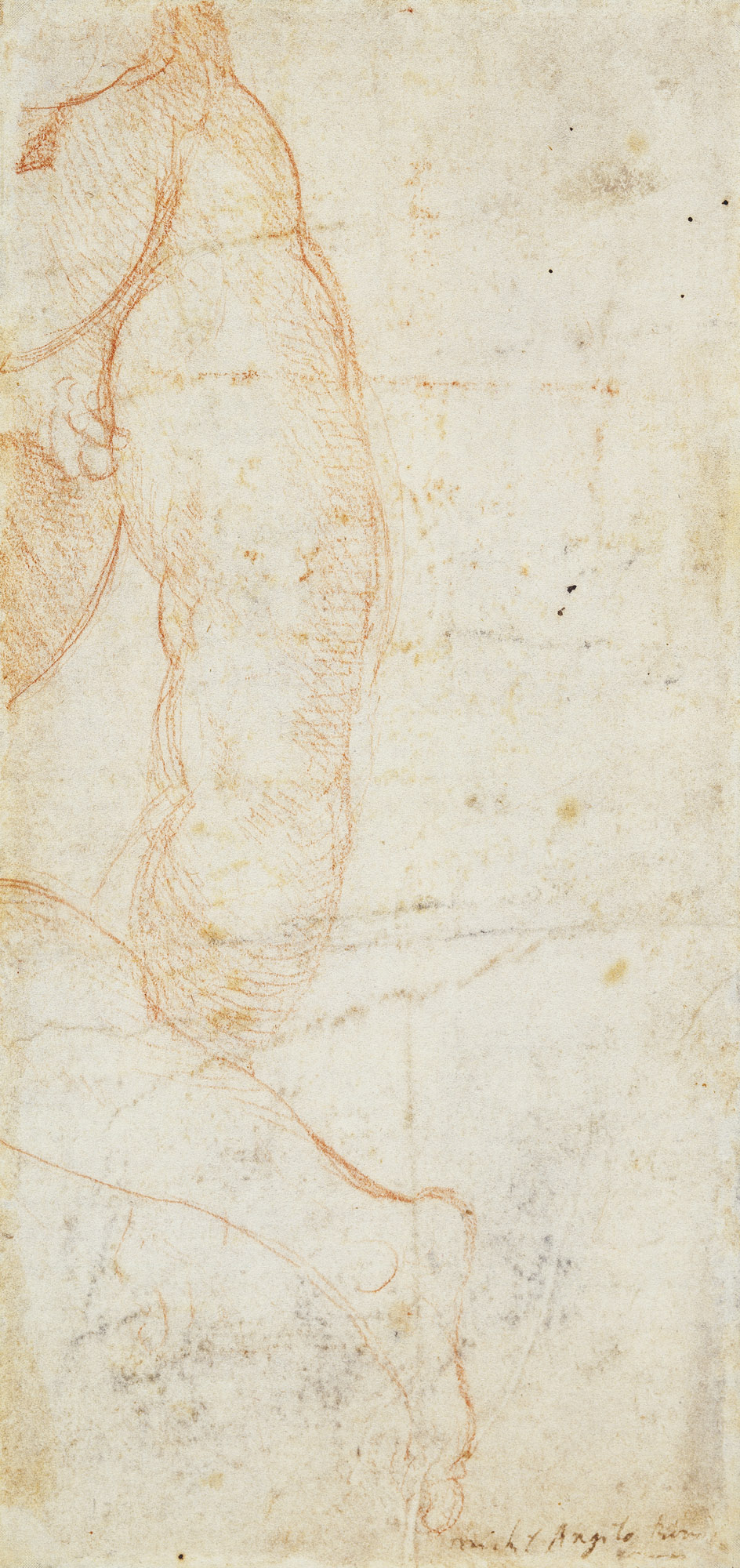
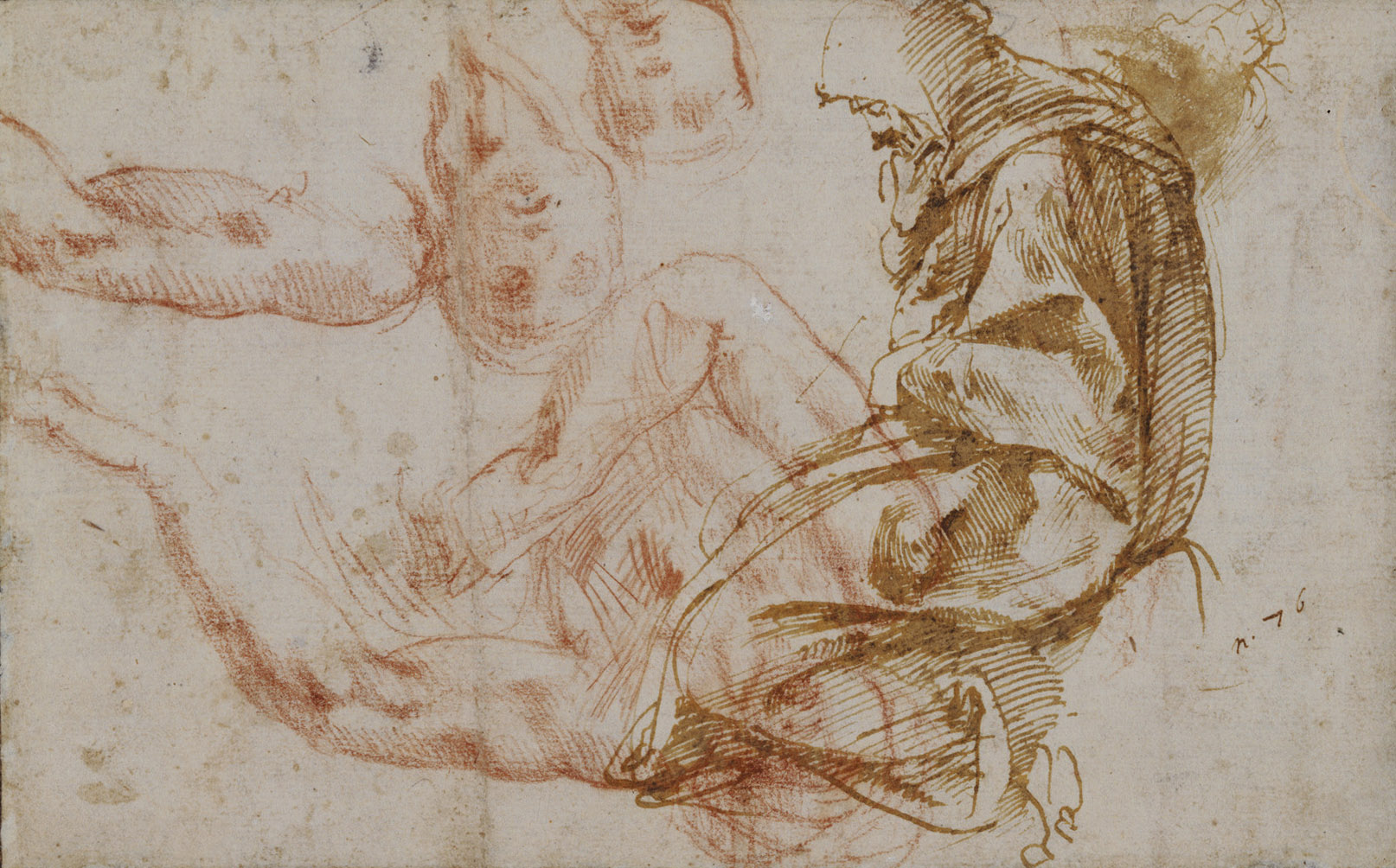

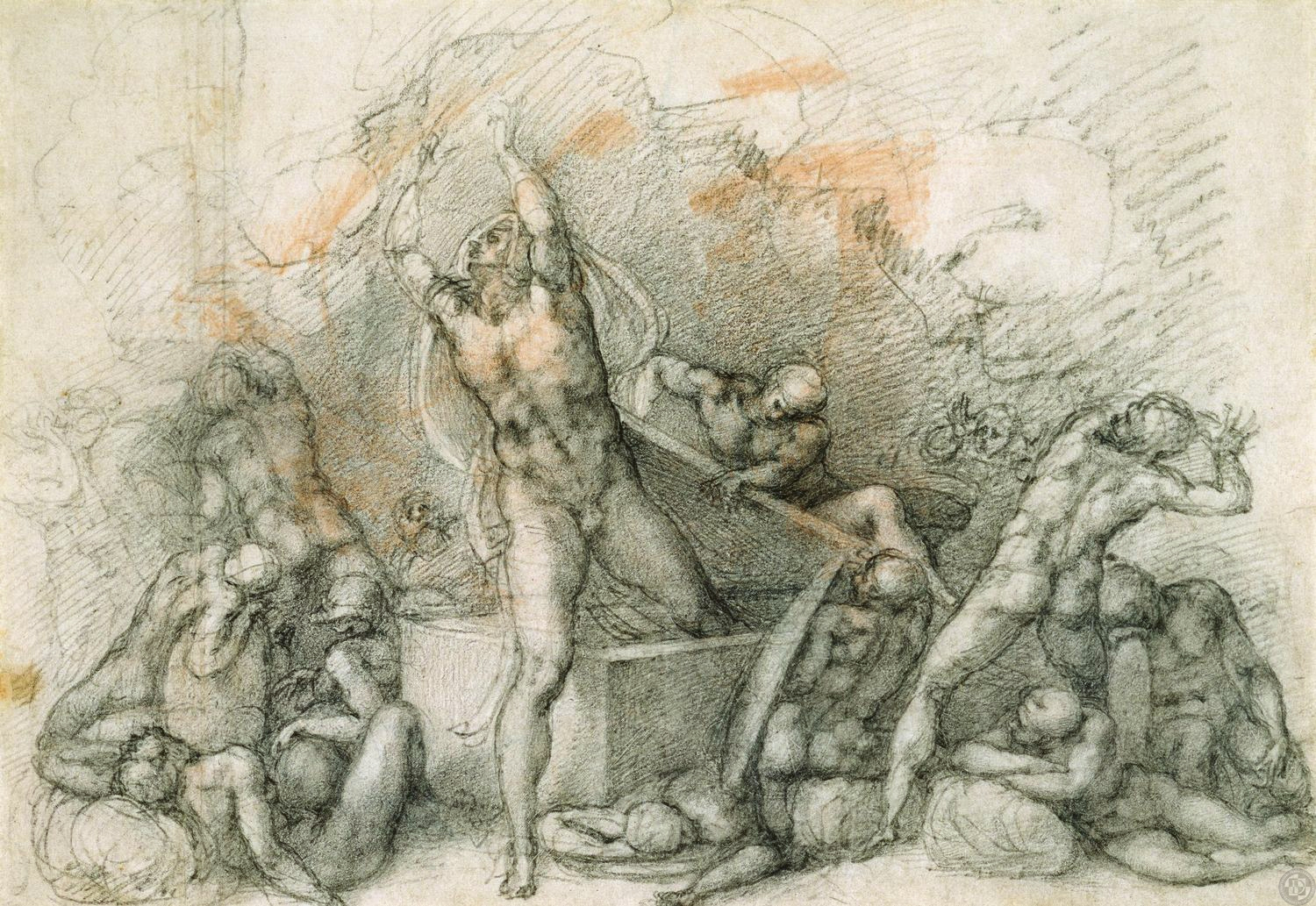
The Resurrection
c.1532
Description:
Recto: a multi-figure composition showing the resurrected Christ rising from his tomb, surrounded by several soldiers. Verso: studies of a shoulder.
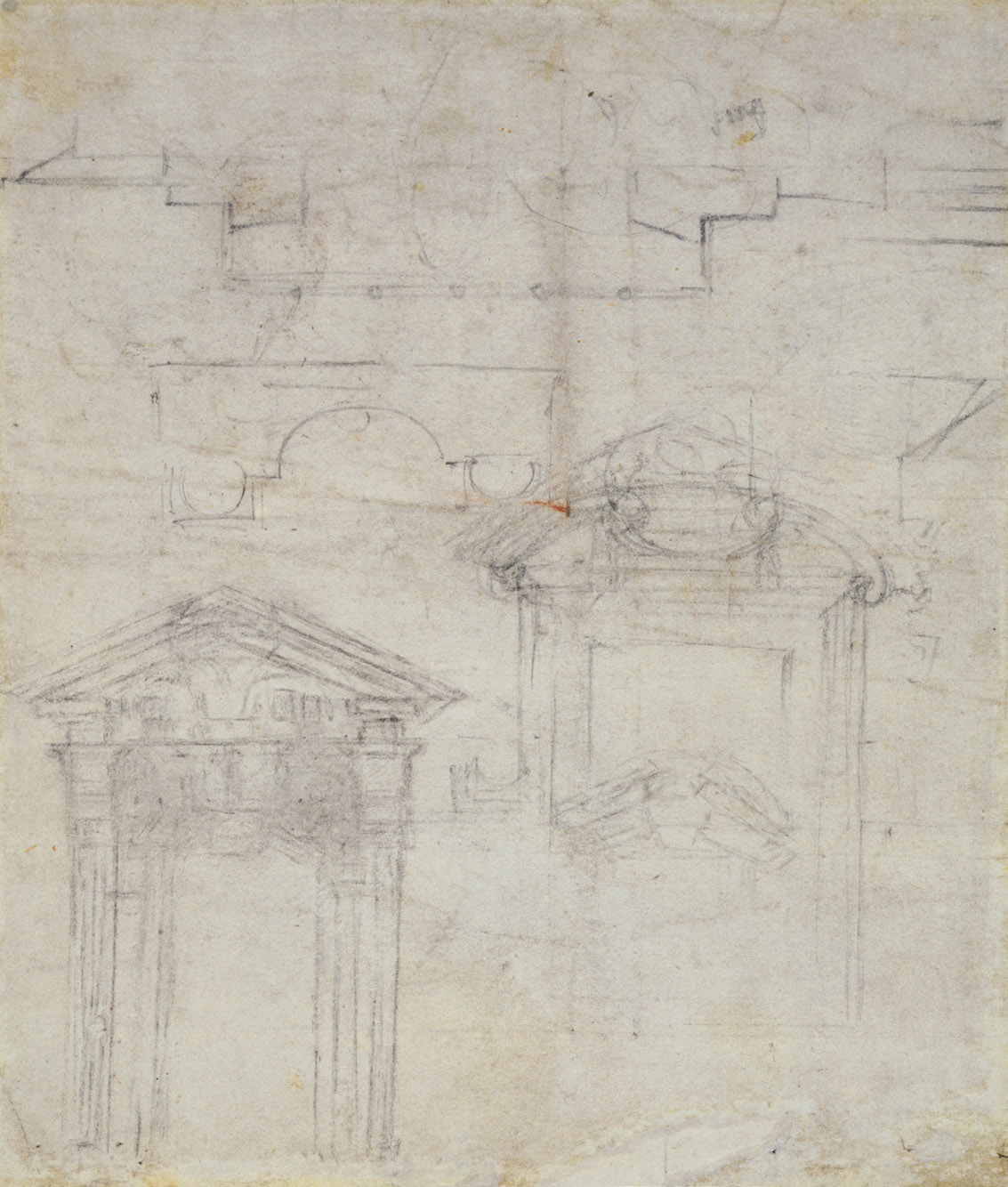

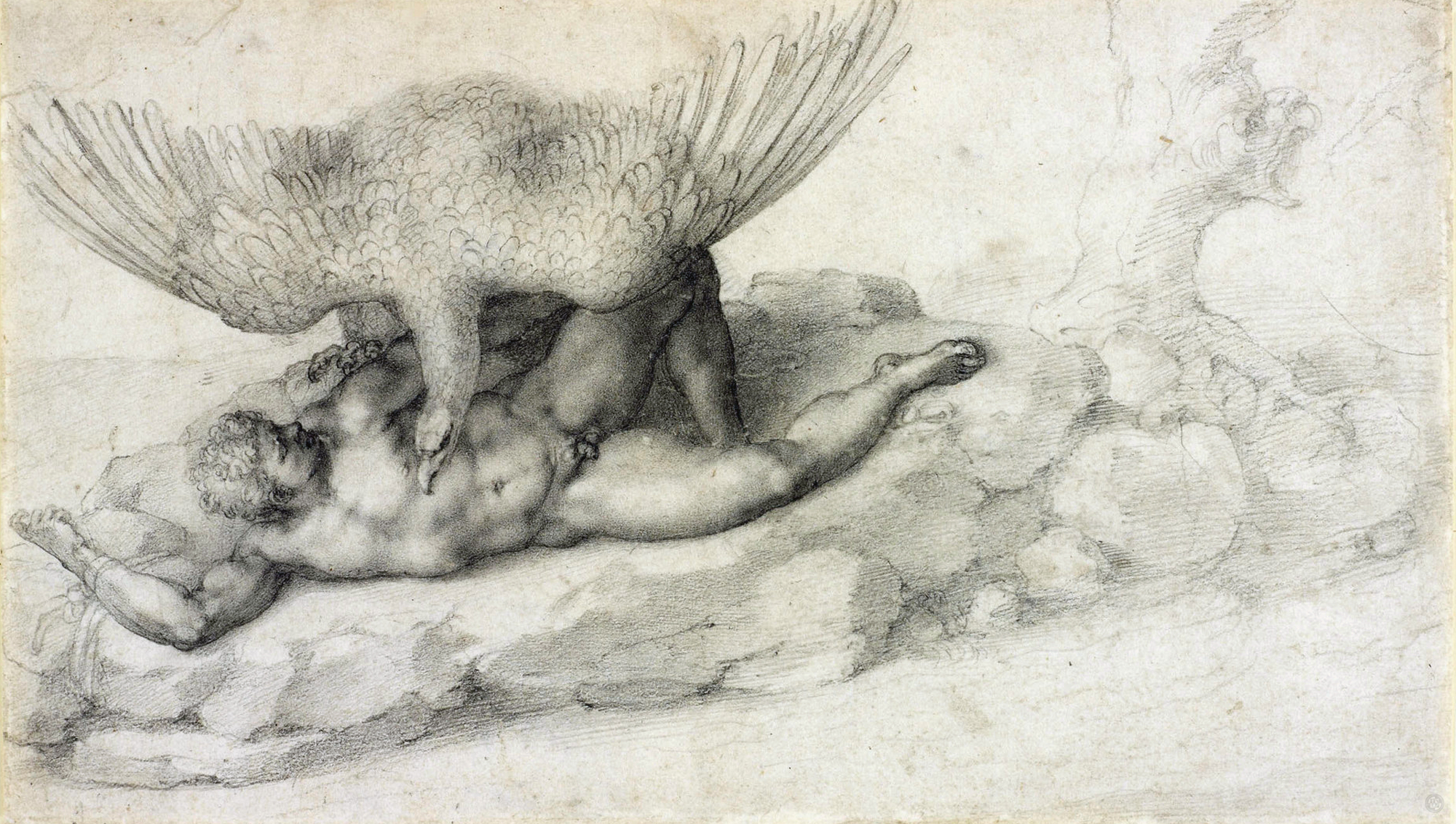





c.1530
Red chalk
27.2 x 42.2 cm
Description:
"A drawing of three highly finished vignettes. On the left, is the killing of the Nemean Lion; at the centre, are Hercules and Antaeus; on the right, is Hercules fighting with the Lernean Hydra. Inscribed: 'questo e il secodo leone ch ercole / amazzo'."

c.1562
Black chalk
38.2 x 21.0 cm
A drawing of the crucified Christ upon a T-shaped cross, flanked by the Virgin Mary on the left, and St John on the right.

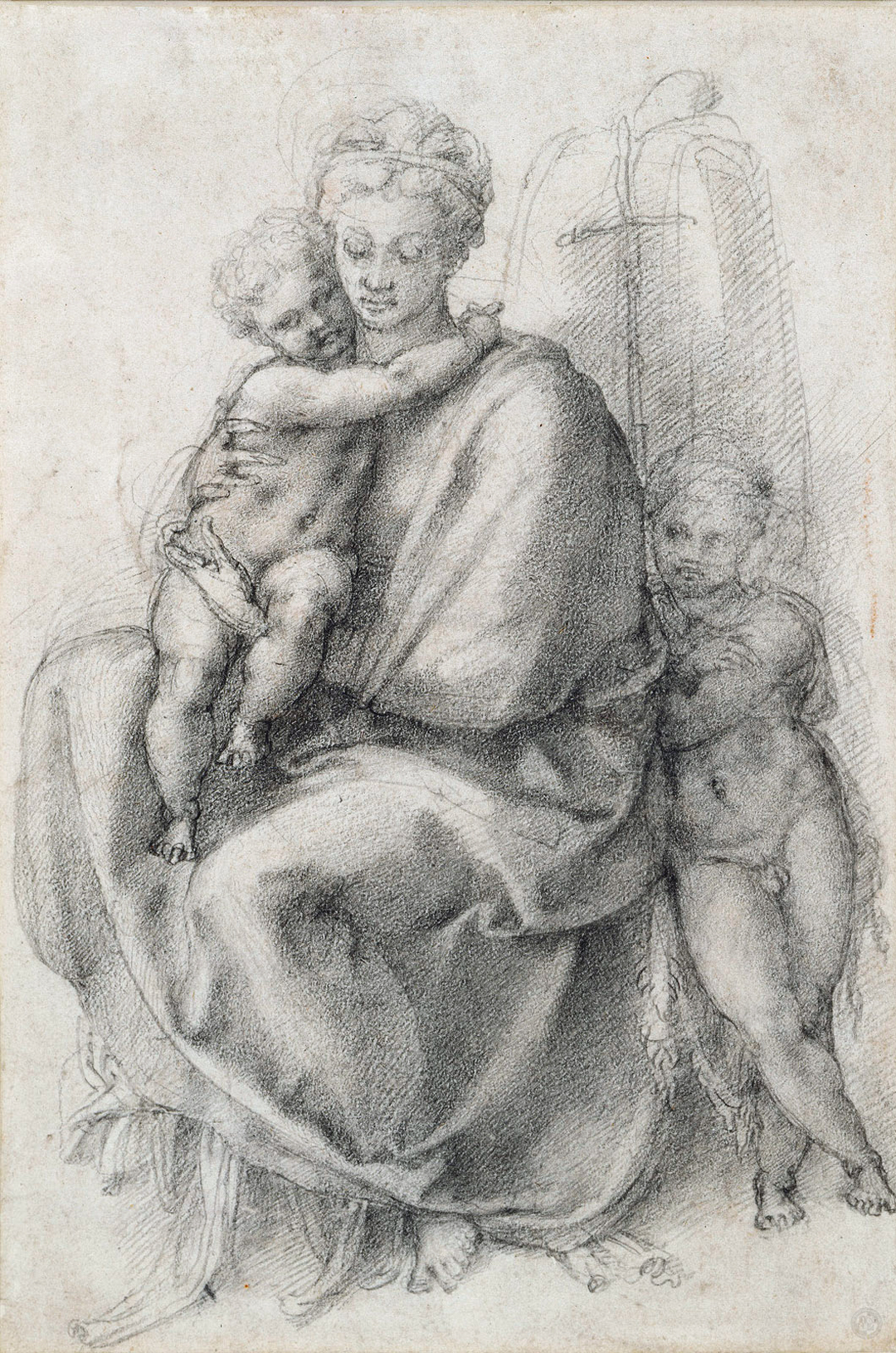
The Virgin and Child with St John the Baptist.
c.1532
Black chalk
31.5 x 21.0 cm
Description:
Alongside Leonardo, Michelangelo was the most potent force of the Italian High Renaissance, and has exerted a tremendous influence on subsequent Western art. This meticulously finished and immensely tender drawing is one of a group of studies by Michelangelo, showing the Virgin with the Christ Child and the young Baptist, which he made in the years around 1532.

Head of the Virgin
c.1540
Black chalk
21.2 x 14.2 cm

Virgin and Child R.
c.1545
Black chalk, over red chalk underdrawing. The ground was later covered with gold paint; only a few traces of this remain. Verso: Pen and ink
22.5 x 19.4 cm
Description:
"a drawing of the Virgin, turned slightly towards the left, with her cheek pressed against the Infant Christ, seated on her lap. To the right of the sheet are faded lines of a poem in Michelangelo's hand. "
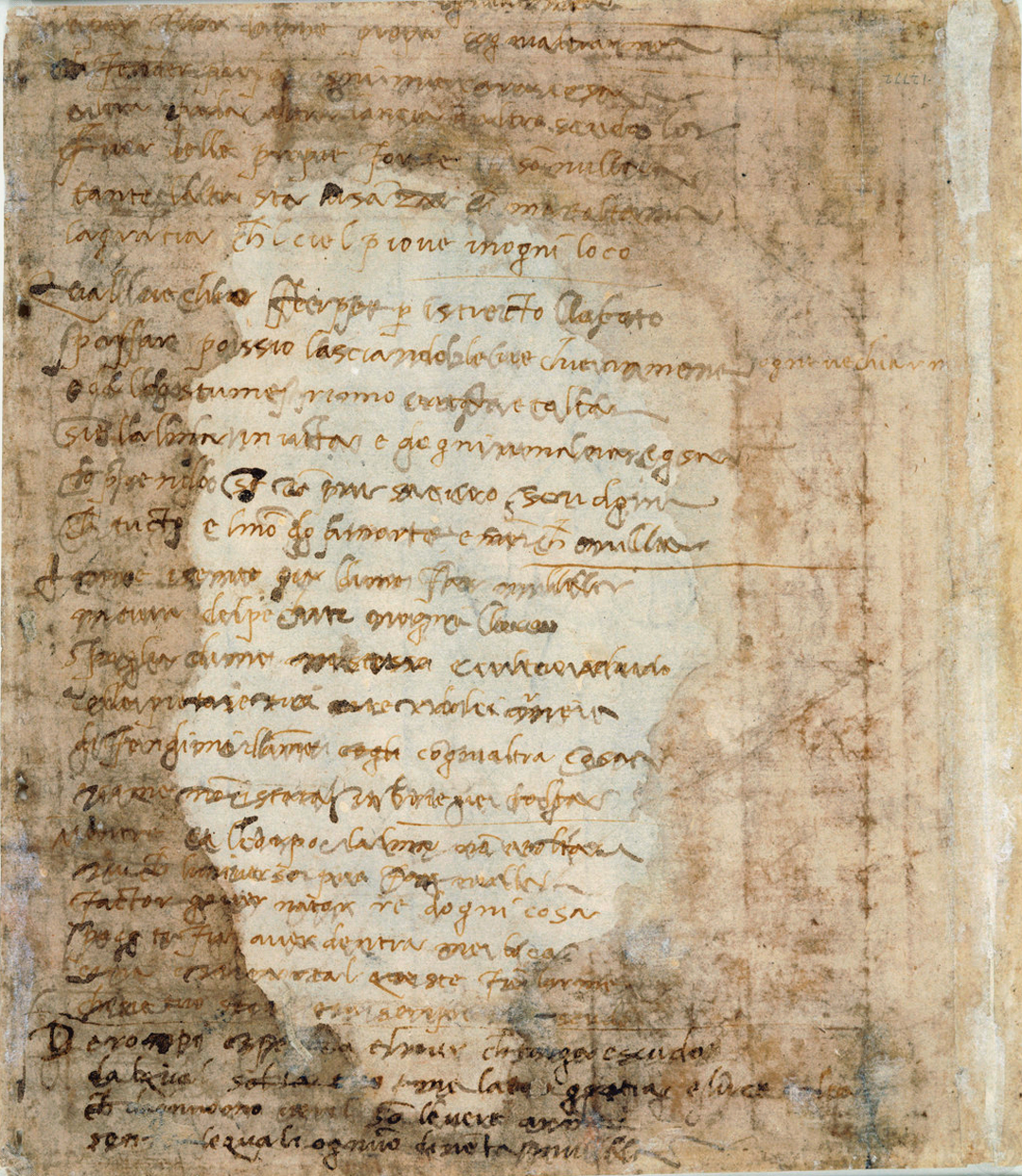
Draft for a Poem
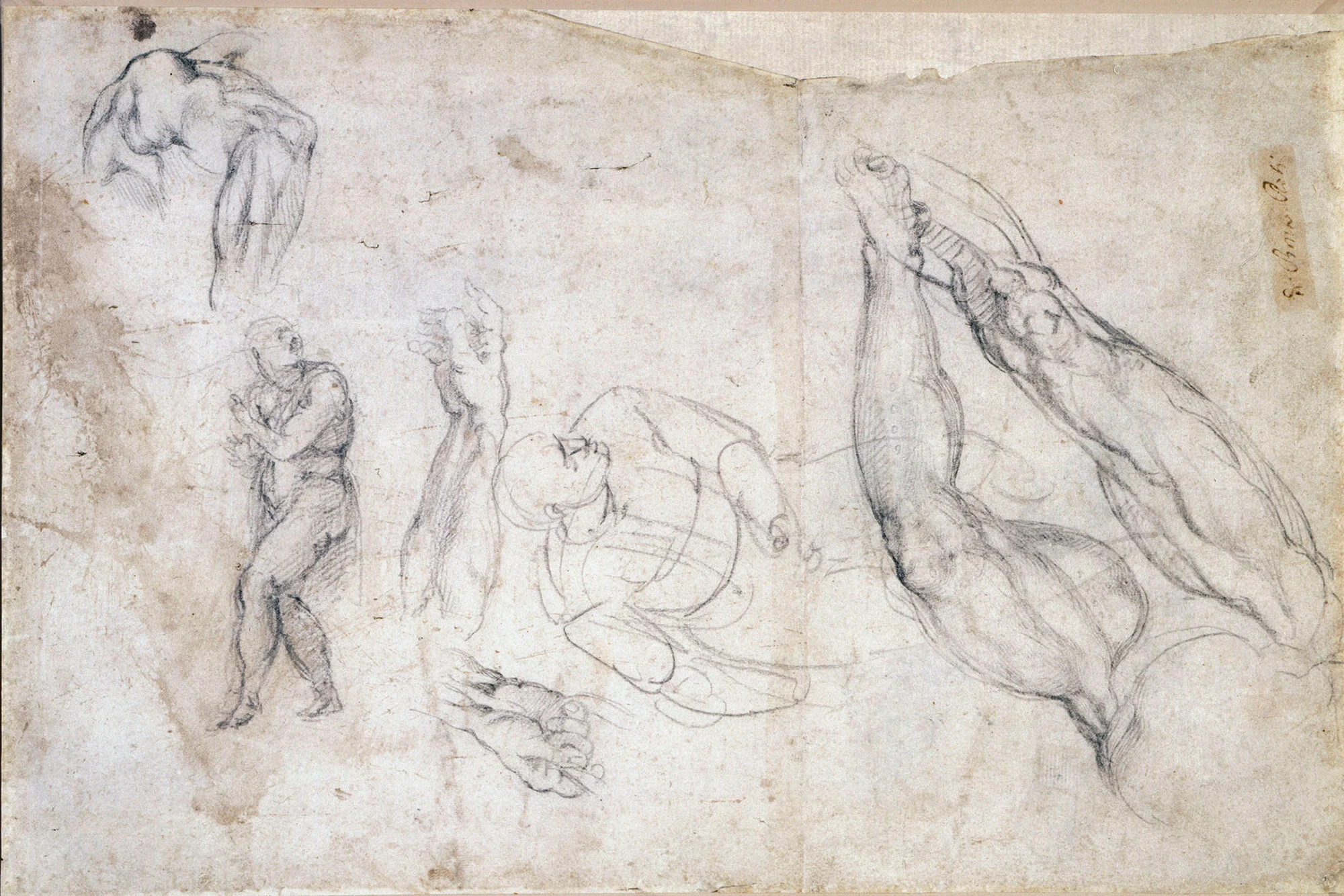

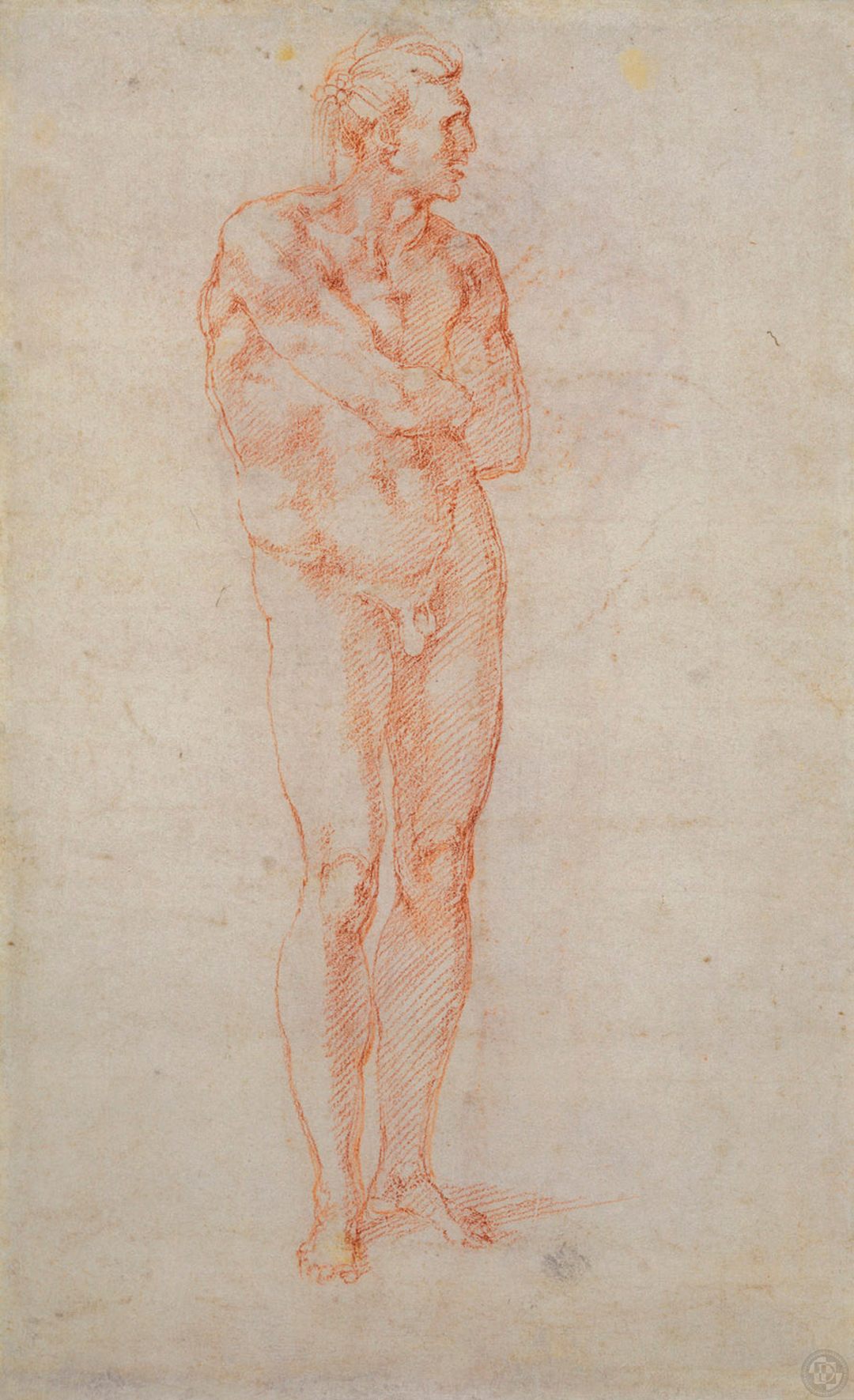

c.1515-20
Recto: Red chalk (two shades). Verso: Stylus
28.9 x 18.0 cm

The Risen Christ"
c.1532
Black chalk
37.2 x 22.1 cm
Description:
"Michelangelo was primarily responsible for reviving the tradition in post-Classical art that conceives of the body (and especially the male nude) as the physical manifestation of emotional and spiritual states. Intense feeling requires powerful form and, though they are always based on the most attentive study from the life, Michelangelo’s figures could on occasion be oppressively heavy. Here, however, the figure of Christ springs athletically from the tomb, his limbs spanning the entire composition, the relatively small head allowing attention to focus on the magnificently modelled torso at the centre. Michelangelo used tiny stippled strokes of chalk to build up the body, which stands out in implied relief from the plane of the paper, emphasised by the flattened, decorative swirl of the shroud.
Around 1530 Michelangelo made more than a dozen drawings of the Resurrection or the Risen Christ alone. While these may have been prompted by a specific project, the care taken over this drawing suggests that it was intended not as a preparatory sketch but as a finished work of art. Two further large studies of the Risen Christ survive, and a fourth is known through copies. Such highly finished drawings were a speciality of Michelangelo, and his handful of ‘presentation drawings’ stand at the very pinnacle of European draughtsmanship. Made as gifts for his closest friends, they were painstakingly worked and often imbued with personal meaning, the full extent of which is not always clear to us. The Royal Collection holds the largest extant group of presentation drawings by Michelangelo, including three of the four made for the young nobleman Tommaso de’ Cavalieri in 1532-3 - the Punishment of Tityus, the Fall of Phaeton, and the Bacchanal of Children (together with a copy by Giulio Clovio of the fourth, the Rape of Ganymede). The Risen Christ may share a common provenance with those sheets, all of which are in a similarly excellent condition. By 1600 the Farnese in Rome owned at least five of the drawings by Michelangelo now in the Royal Collection, though for works of such renown their subsequent history is surprisingly obscure, and it is not known how they reached England at some point over the next two centuries.
Text adapted from Holbein to Hockney: Drawings from the Royal Collection

1533
Red chalk
27.4 x 38.8 cm
Reference(s):
Provenance:
Presented by the artist to Tommaso de' Cavalieri; after whose death, 1587, acquired by Cardinal Alessandro Farnese; Royal Collection by c.1810 (Inventory A, p. 45, Mich: Angelo Buonaroti Tom. II, '3. Several Boys carrying a dead Monster, One with a Pig; some boiling a Caldron, other in Groupe in the foreground drinking; A female Satyr and two Children; one sucking her lank Breast, the other uncovering an Old Man a Sleep - perhaps the Emblem of Night - the subject very obscure, but the Drawing very Capital...Red Chalk.').
Description:
Like the Fall of Phaeton, this ‘presentation drawing’ was executed by Michelangelo as a gift for Tommaso de’ Cavalieri. The level of finish is extraordinary, even by Michelangelo’s standards, and the sheet is almost perfectly preserved. The children represent the lowest state of humanity, devoid of reason (also denoted by the drunken slumber of the only adult human) and acting in a semi-animal manner, made explicit by the satyress suckling at lower left.
This drawing of A Children’s bacchanal was executed by Michelangelo as a gift for his friend Tommaso de’ Cavalieri. Vasari (who knew Michelangelo well) mentioned it last among the four sheets made for Cavalieri in 1532-3, and as some of the figures in the composition were copied by Michelangelo’s Florentine assistant Raffaello da Montelupo, it must have been begun before Michelangelo left Florence for Rome for the last time, in October 1533. The level of finish is extraordinary, even by Michelangelo’s standards. Working mainly with the sharpened point of the chalk, the artist maintained a consistent level of exquisite workmanship across the whole of the densely figured sheet. The state of preservation of the sheet is almost perfect, except for a little trimming around the edges as shown by early engravings after the drawing.
The scene is a cave or other rocky setting hung with drapery. At upper left, children stir a cauldron, while others stoke its fire; beyond hang a hare and the head of a boar, a small boar is borne on a child’s shoulders, and at the centre a group struggle to carry in a deer. At upper right is a wine butt, from which some children drink, while another urinates into a wine bowl that is doubtless to be offered to one of his companions. Below, a man sleeps, apparently under the effect of the wine, while to the left an old satyr-woman suckles a child.
No textual source is known for the imagery, but the meaning is clear. The infants represent the lowest state of humanity, devoid of reason (also denoted by the drunken slumber of the only adult human) and thus acting in a semi-animal manner, made explicit by the satyr-woman. At one level this is a standard Neoplatonic theme; less seriously, it may also be possible to see in the drawing a warning from the austere Michelangelo to the adolescent Cavalieri about the perils of drink.
Many of the motifs are derived from antique sarcophagi of children, of which several were known in the sixteenth century. While the echoes of Raphael’s Entombment of 1507 (now Galleria Borghese, Rome; then in San Francesco al Prato, Perugia), in the opposed straining of the central group, may be thought of as generic, the kneeling putto at upper right replicates the complex pose of the holy woman at the lower right of that painting, turned through ninety degrees. This is not a simple quotation: Michelangelo was repaying a compliment, for Raphael had taken his figure from the Virgin in Michelangelo’s Doni Tondo (Uffizi), also turning her through ninety degrees. In effect, Michelangelo was here replicating the pose of his own Doni Virgin, seen from behind. That Raphael was an intermediary in this transformation is demonstrated by the echoes of the Borghese Entombment in a double-sided drawing by Michelangelo in Bayonne. On the recto of that sheet is a Lamentation - actually little different in iconography from Raphael’s painting, which is in fact a Lamentation and carrying of Christ’s body to the tomb - that quotes Raphael’s composition directly in at least two elements; on the verso is what appears to be a preparatory sketch for the Children’s bacchanal, showing a group of putti around (and some climbing into) a large wine vat, with a recumbent male nude immediately to the left.
Catalogue entry adapted from The Art of Italy in the Royal Collection: Renaissance and Baroque, London, 2007"


The Fall of Phaethon

Archers shooting at a herm



























